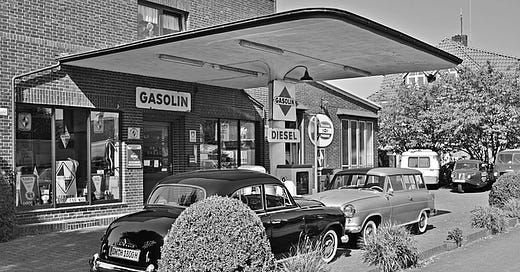⛽ Cars We Remember/Collector Car Corner -Gas Stations, Auto Centers and Truck Stops
Small town gas stations have grown into today’s massive convenience plazas. One look back, one look forward!
Over the years, I’ve received many letters and emails from readers recollecting their memories of the smaller gas stations and many auto service centers prevalent during the 1950s and 1960s. Many of the auto centers had big marketing money behind them, like Sears, Montgomery Ward and Kmart. These auto centers were part of the “big store” stats that verified customers scheduled for an oil change would 90% of the time travel into the store’s merchandising department and purchase anything from a gallon of paint to a pair of shoes. Hopefully, both and then some.
My personal memories of Montgomery Ward and Sears Auto Centers are many, as back then Sears was the “in-store” to be, regardless of need. I remember many times my dad taking his 1955 Plymouth Savoy to Sears, family aboard, for a late Friday afternoon oil and filter visit. Then in 1961, dad’s first brand new car ala a Chevy Belair, received the same service at the same Sears Auto Center.
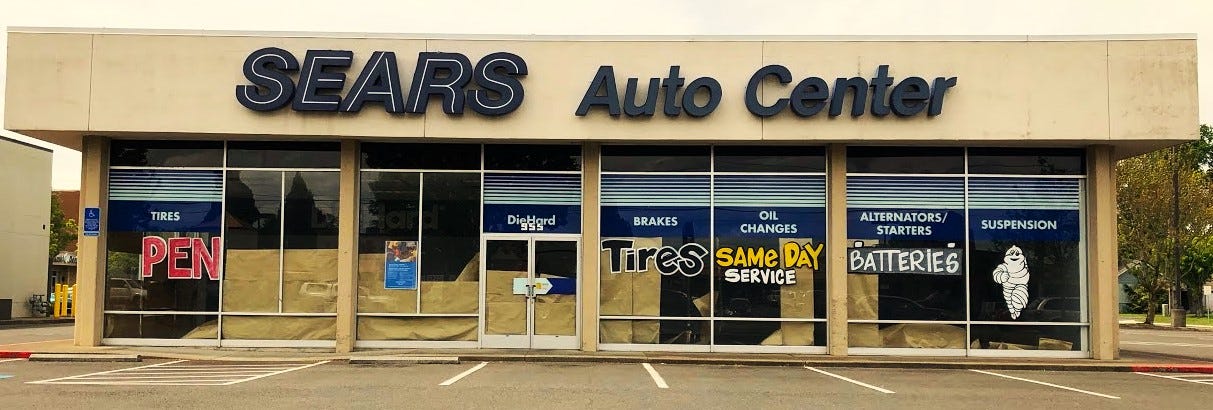
What I didn’t know at the time is that these primitive auto centers of the 1960s would one day grow into massive business concerns, serving the needs of car and truck travelers with everything from brisket beef sandwiches to a car wash and everything in between. The problem is it wouldn’t be Sears or Montgomery Ward as this duo stayed in the same locales servicing hometowns with stores located inside the city limits.
This was not a business mistake as back then there weren’t as many heavily traveled freeways, turnpikes and parkways whereas today’s modern day service centers are marvels, and all located by freeways.
Specifically, let’s fast forward to 2024, and see how the “gas station” evolved. Nowadays, travelers will enjoy a massive complex like Buc-ees, offering everything from to the finest pulled pork or brisket beef sandwiches for hungry travelers to the cleanest rest rooms in America.
I first experienced a Buc-ees when I visited my daughter in Florida not long ago and was mesmerized by what the gas station on the corner of my street grew into. Buc-ees is the furthest thing from the gas stations I remember, growing into a nearly 75,000 sq. ft. convenience store and car wash (located in Tennessee) to serve all customer needs. I had a beef brisket sandwich, and it was great.
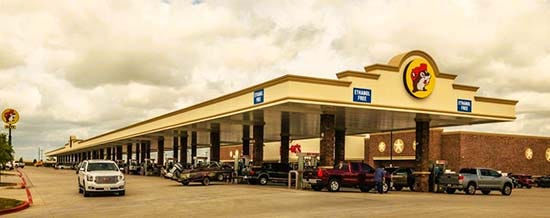
Buc-ees has been in business since 1982 and is still growing with 48 locations in nine states. Its commitment is to provide a clean, friendly, and a fully stocked experience for customers. The stores are centered around a mascot Beaver named “Buc-ee” that you see everywhere on approaching billboards to a gala of in-store souvenirs and apparel.
Regardless of where you may find a Buc-ees, big or small, the service and Texas style food remains the same and a visit is highly recommended. Notable is Buc-ee’s is not a truck center, with 18-wheelers having to go to official truck centers that have more overnight parking, pet and shower amenities.
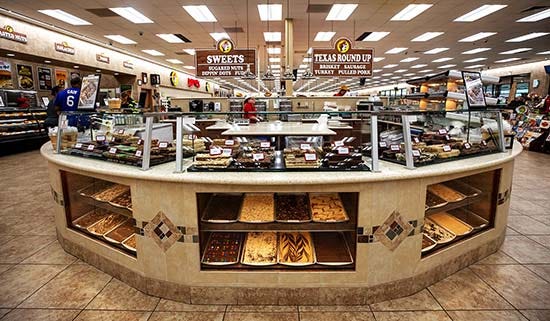
If you are an 18-wheeler over the road trucker, numerous truck centers that also cater to “regular” drivers of cars and pickups, are many. Most popular are Love’s with 630 locations in 42 states and Pilot/Flying J’s, offering 750 locations in 44 states. Flying J’s offers a sit-down restaurant style food center while Pilot offers more fast-food choices and seating.
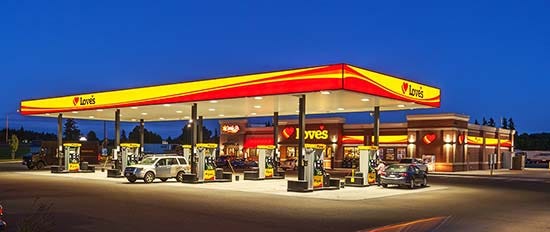
The third biggest truck center is Travel Centers of America (TA/Petro), with 270 stopovers in 44 states. These famous truck centers are located at just about every major freeway junction across the United States and known for clean showers, great food, pet friendly atmospheres and plenty of space to park and sleep before hitting the highways again.
Modern days aside, back in the day, be it a specific oil change, tires, complete tune-up, Ted Williams baseball glove or JC Higgins bicycle, Sears had it in stock. The store in my hometown Vineland, N.J., like many Sears of the decade, featured a little bit of food, as Hires Root Beer in a frosted mug and a hot dog on a special, lightly toasted bun were the only offerings I remember. Still, at age 10, it was a royal treat.
However, more than my Sears and Buc-ee’s recollections, it’s the gas stations of the older era that are firmly ingrained in my memory bank. There was so much activity back then as all gas pump attendants were attired in clean, fully pressed uniforms at the start of every shift, many with bow ties and special headwear.
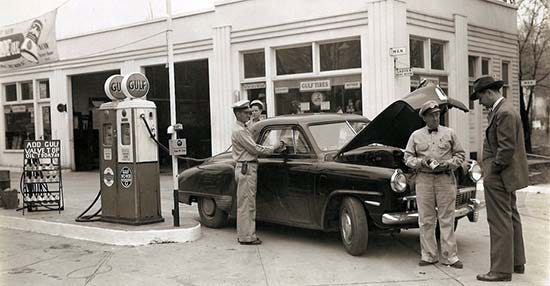
Expected was the friendly “hello, can I fill it up?” and “Happy Motoring” if you did your business at an Esso station. The Gulf stations followed a reversed role, meaning the driver had to tell the attendant “Chester A. Riley sent me.” This greeting came thanks to the popularity of the 1950s TV hit “The Life of Riley” starring William Bendix and his greeting request “Tell them Riley sent you.”
(Special note: The Vineland Esso was my very first auto racing sponsor, giving me a full tank of high-test gas to race at Atlantic City Dragway in Pleasantville, N.J. back in 1968. I lettered his business name on the side of my ’67 GTX with white shoe polish and proceeded to win my first ever race and trophy!)
As for service, nothing beat the old gas stations as attendants would clean your car’s windshield, check the oil, and even make sure the tire pressures were correct. The Flying A, Sinclair, Esso, Gulf and Texaco stations stand out in my mind, as does Sunoco and later American, the latter the first that I remember to offer a no-lead gasoline well before government mandates.
Unlike today’s ultra-modern food mart gas stations, many open 24 hours, the stations of past were fascinating places for a young lad like me. From engines being changed, transmissions rebuilt to tires mounted and balanced, I loved everything about a gas station, and I asked a lot of questions.
As for snacks, even though the old stations didn’t have warm meals and sit-down tables to dine, most offered Coca-Cola, Nehi Orange, 7-Up, Hires Root Beer, or Pepsi soda products. They also had to have a nice lineup of potato chips and pretzels and perhaps five or six selections of candy bars, my favorites being Skybar, Bit-o-Honey, Clark Bar or Sugar Daddy. Oh yes, can’t forget those Planters salted peanuts or a pack of Lance Nip-Chee crackers.
Sadly, as the years went by and the auto manufacturers took further control of minor and major car repairs, independents were left mostly with state inspections, t
ire sales and oil changes. It’s a main reason the gas stations we knew growing up have disappeared sans just a few. Further, many modern service centers can’t work on electric cars, period. The highly computerized battery creations call for specialized repair centers to oversee the problems.
One positive for us “old-timers” is the collector car. There may not be any gas pumps outside, but today’s independent garage is a great place for collector car owners to have their car properly serviced. These small independents still know how to set up a Holley carburetor or replace a broken rocker arm without any problems. A new camshaft for your’55 Chevy with the 350-V8 crate engine? Sure, no problem.
From small corner gas station to today’s massive refueling complexes, America’s love of catering to travelers of all ages continues to evolve.
As for Sears and Montgomery Ward, there are but three Sears facilities still operating, and it’s been since 2001 that an original Montgomery Ward did any business. However, both Sears and Ward’s have an online presence, as does KMart.
In the case of Sears, Ward’s and Kmart, some people call it ‘sad.” I call it mismanagement and too much corporate complacency.
(Greg Zyla is a syndicated auto and nostalgia columnist who welcomes reader interaction at greg@gregzyla.com or snail mail at Greg Zyla, Roosevelt St., Sayre, Pa. 18840.)


